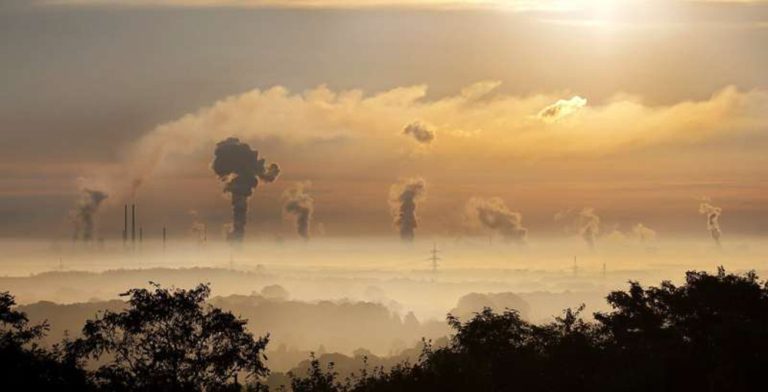Metals, particularly nickel and vanadium, and sulfate particles are the components of fine particulate air pollution (PM2.5) that most strongly contribute to the association between long-term exposure to air pollution and hospitalization among asthma sufferers, according to a new study led by Harvard T.H. Chan School of Public Health.
“We know that PM2.5 increases the risk of asthma attacks and hospitalizations, but those particles are made of many compounds, and we haven’t known which are most harmful,” said corresponding author Joel Schwartz, professor of environmental epidemiology. “Our study teases out which specific compounds in the PM2.5 mixture necessitate the strongest control efforts in order to improve asthma outcomes.”
The study is published in the American Journal of Respiratory and Critical Care Medicine.
Most prior studies have examined the relationship between asthma and individual pollutants or PM2.5 as a whole. The researchers took a middle-ground approach for this study, identifying the pollutants composing PM2.5 and investigating their joint impact on asthma exacerbation. They used previous studies and machine learning algorithms to identify bromine, calcium, copper, elemental carbon, iron, potassium, ammonium, nickel, nitrate, organic carbon, lead, silicon, sulfate, vanadium, and zinc as the compounds composing PM2.5’s mixture of metals and organic compounds.
They used additional machine learning algorithms to produce annual estimates of each compound at a U.S. zip-code level and they used state inpatient databases maintained by the Healthcare Cost and Utilization Project to obtain the total number of asthma hospitalizations that occurred in 11 states between 2002 and 2016.
Controlling for variables such as outdoor temperature and socioeconomic status among those hospitalized, the researchers used a weighted quantile sum regression, a statistical method that assessed how each compound in the PM2.5 mixture contributed to the 469,005 asthma hospitalizations included in the study.
The results showed that for each decile increase in the pollutant mixture, asthma hospitalizations increased 10.6% among children and 8% among adults ages 19 to 64. Nickel, vanadium, sulfate, nitrate, bromine, and ammonium contributed the most weight to this association.
“If we want to reduce asthma hospitalizations, these are the sources that need to be better controlled—which we know how to do,” Schwartz said. “Nickel and vanadium, for example, are produced from burning fuel oil, such as heating oil and heavier oils used by larger buildings. Sulfates come from coal burning. We can put scrubbers on coal combustion plants or replace coal with less polluting fuels, and we can remove metal contaminants from fuel oil.”
https://medicalxpress.com/news/2025-08-metals-sulfate-air-pollution-mixture.html


